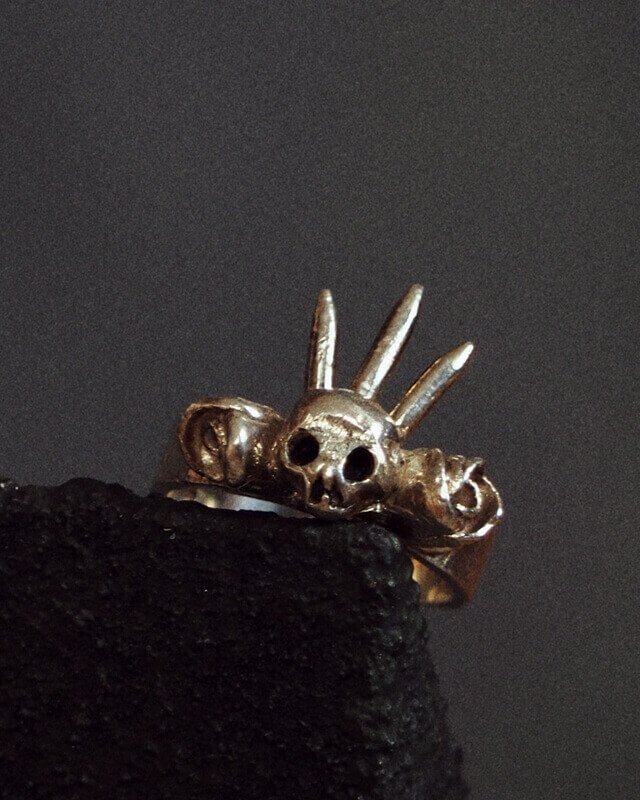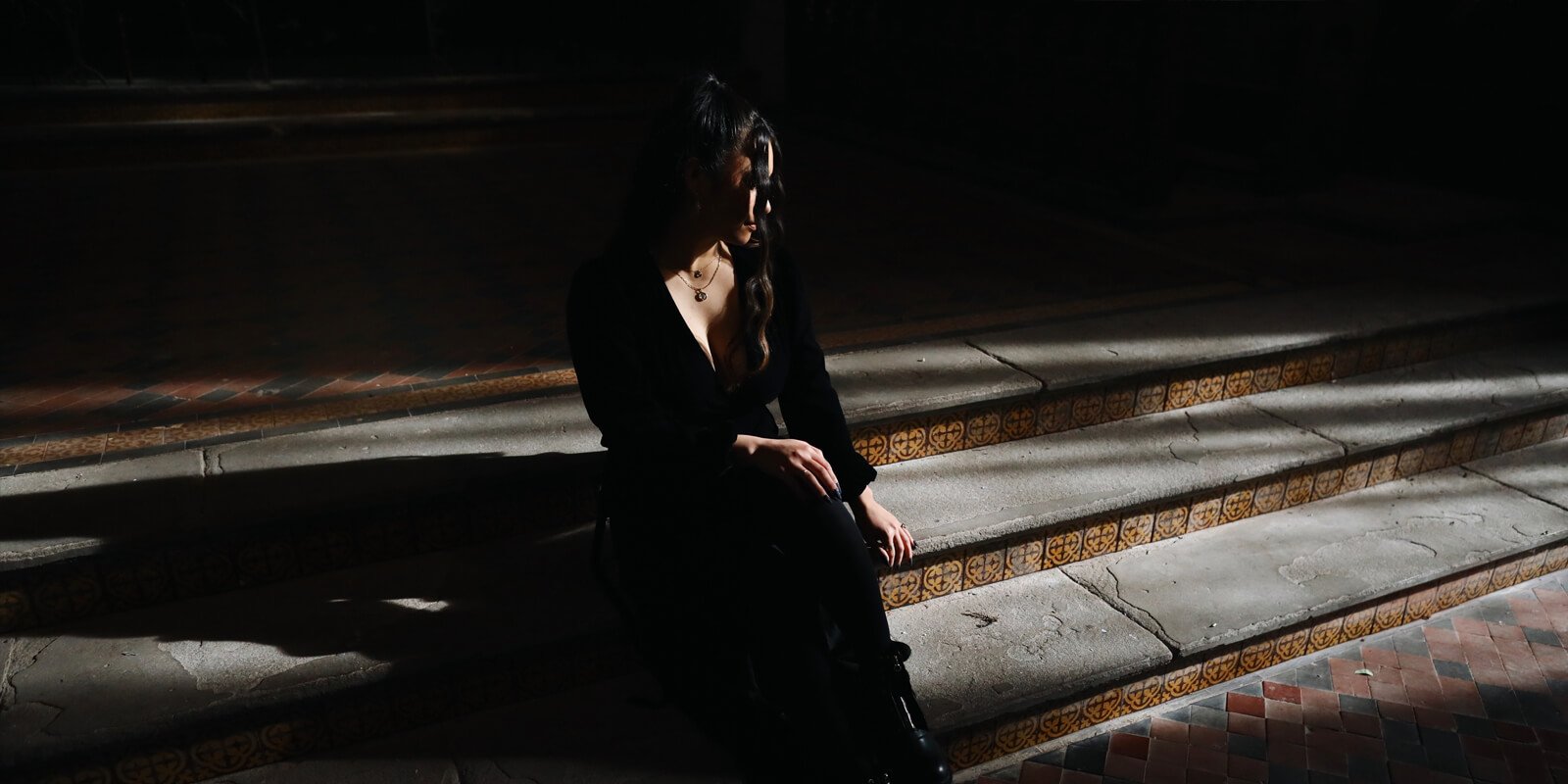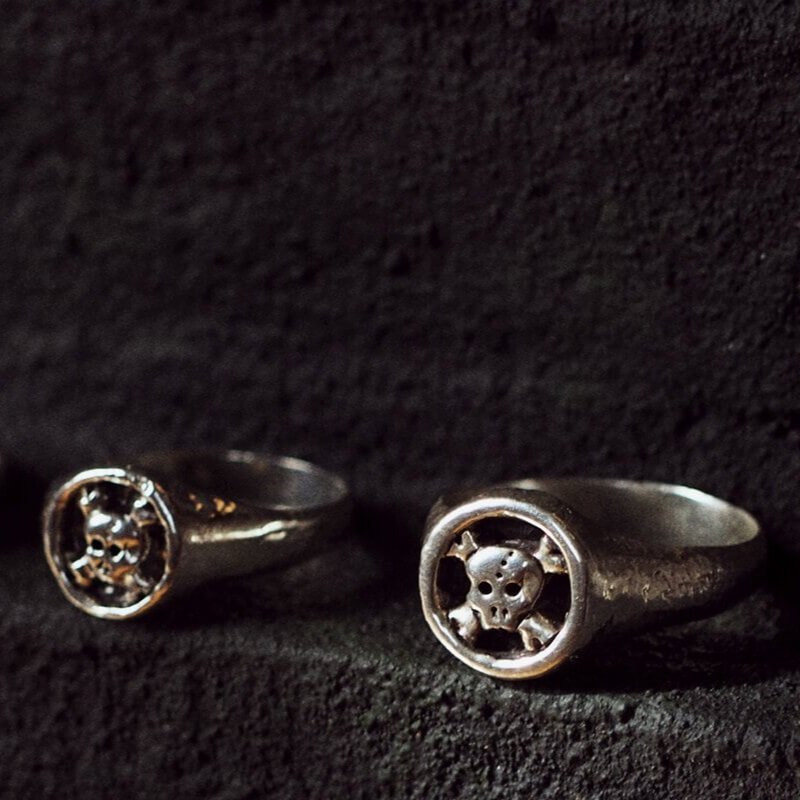Skull Jewellery: where it came from, what it means, and why I love it
I owe a lot to skull jewellery. My whole business grew from my desire to find the perfect skull ring, so I have a special soft spot for it. And I’m not the only one. People have been wearing skull jewellery for almost five hundred years — the earliest examples date back to the 16th Century!
Skull jewellery is drenched in rich symbolism. It’s so synonymous with death, danger, and decay that you can channel instant edge and glamour into any outfit by simply slipping a chunky skull ring onto your finger. Opulence meets darkness.
To help you find your perfect piece, I’ve penned an ‘everything you need to know’ guide on skull jewellery. I’ll go over its history, what it symbolises, how to pick a piece you’ll love forever, and ways to style it.
Where does our fascination with skull jewellery come from?
I need to start with a mini disclaimer — this isn't an exhaustive list of all skull jewellery throughout history; it’s more like a highlight reel. The skull is such an enduring symbol of mortality and death that you'll find the motif scattered throughout cultures and ages. There's loads to explore; these are just my personal top picks.
Mediaeval Memento Mori Jewellery
The first examples of fine jewellery bearing a skull symbol can be traced back to the 1500s when Memento Mori jewellery came into fashion. High society would adorn themselves with specially commissioned skull rings and medallions to remind themselves to live piously because death was always close at hand.
The name ‘Memento Mori’ is Latin for ‘remember you will die’, and the skull symbolises the looming presence of death. My own Cheron pendant, Villeroi skull signet ring, and Clairval skull medallion treasures were inspired by these early pieces.
Victorian Mourning Jewellery
Over time, skull jewellery began to take on a new meaning. The Victorians started wearing it as an act of remembrance for loved ones who had passed beyond the veil. When we think of antique skull jewellery, it's usually these intricate Victorian jewels we’re thinking of!
The Victorians would wear skull necklaces and rings carved with inscriptions and dates to honour lost loved ones. In most cases, the jewellery was gold with black enamel accents and was often very detailed. Mourning rings often featured skulls flanked by embellishments on either side, similar to my Ludovico and St Aubert rings.
20th-century counterculture and couture
In the latter half of the 19th Century, we saw skull jewellery take the world by storm again. And we have '70s and '80s counterculture to thank for it. Rock and early metal bands popularised chunky-style silver skull rings, which could also be seen glimmering on the knuckles of bikers and gangsters.
You’ll also find skull jewellery in ‘90s goth fashion. They’d deck themselves out in mock Victorian mourning jewellery alongside other timeless pieces like black glass rosary beads and ornate crosses layered with simple chokers.
The 1996 film The Craft is a perfect example of how ‘90s kids blended old-world treasures with trending garments to create an iconic fashion moment for skull jewellery. It was more than enough to turn me to the dark side!
Skulls became so embedded into the DNA of the alternative scene that edgy fashion houses picked up the motif and brought it into the mainstream. Opulent skull-themed jewels by Vivienne Westwood and Alexander McQueen have helped widen the appeal and even elevated skull jewellery to couture status.
What does it mean to wear skull jewellery?
You may not know this, but different skull styles actually have different meanings. The skull design you choose can conjure up different meanings, from secret societies to religious iconography and biker gangs.
Jawless Skulls
Pay homage to sacred treasures from the Tudor and Elizabethan periods by opting for a simple, jawless skull necklace or ring. These early designs often had three dots on the forehead (like my designs do) to mimic the ‘suture’ crack in real human skulls.
The jawless style is the closest you’ll get to traditional 16th-century Memento Mori jewellery, especially when you choose a signet ring or medallion-style pendant. You can also channel the gritty metal scene of the ‘80s and ‘70s by choosing a chunky jawless skull design carved directly into the ring band itself.
Full Skulls
Tap into the lavish decadence of Victorian mourning jewellery by choosing a full skull design. The more decorative, the better! If you want it to be super authentic, add enamel or engravings into the mix.
Skull and Crossbones
Did you know that Yale University’s secret Skull and Bones society used to wear skull and crossbones rings to signify their membership? It’s also closely linked to the Jolly Roger flag used by pirates and to antique poison labels used in medicine. In both these cases, the skull and crossbones meaning is clear — death and danger are close at hand.
Gem embellishments
Skull rings look wicked with a gemstone embellishment set into the forehead, the eye sockets, or as part of the overall design. The kind of gem you choose also impacts the symbolism behind the jewellery. For example, diamonds symbolise eternal love and look incredible as part of a gothic engagement ring design.
How to wear skull jewellery
Do you prefer delicate minimalism or the glorious grandiosity of a maximalist look? Perhaps you swing both ways and like to have options? However you roll, knowing how to rock a piece of handmade gothic skull jewellery is easy when you know how.
Have you been drawn to a statement treasure? Larger, more flamboyant pieces like my Iscariot Skull Earrings do all the talking, so you can rock them solo. This is especially true for custom ring designs — I’m usually commissioned to make gorgeously oversized statement skull rings fringed with spikes and sprinkled with personal details. When it’s custom, you can go as big as you like.
If you’re in the market for a versatile mid-sized piece like my Clairval Skull Necklaces, Valancourt Skull earrings, and any of my skull rings, you’re free to dial the look up or down. Mid-sized skull jewellery looks super cute when worn alone but can also be layered. If you want to amp up the drama, I’d recommend layering your mid-sized skull ring with the Villefort Spiked Halo or the Caeles Wing.
Delicate jewels like my Blanche Skull Rings and Valancourt skull necklaces are layering staples but also look fab on their own if you like a little dusting of bling. They can be worn with super showy pieces because they don’t outshine the main event — understated but still gorgeously goth. I usually suggest them to the 'I don't wear much jewellery' people.
Now to the big debate: what finger do you wear a skull ring on? The choice is yours! Large, chunky skull rings often look good worn on the index finger or middle finger like the metalheads and rockers of the past.
Smaller medallion rings and the delicate Blanche ring can be worn on the pinkie finger as a signet. I really like wearing my St Aubert spiked ring as a super mean little pinkie ring because of how wicked the tiny spikes are. You can also choose to stack your skull rings to create a super striking, maximalist look. To be honest, there are no set rules — rock your skull jewellery however you want!
Have you got your eye on a piece of my skull jewellery? Ask me about it, or start choosing your new favourite treasure now. If you’ve been inspired by the history of skull jewellery and want to commission a custom piece with its own special meaning, get in touch and let’s create it together!





























